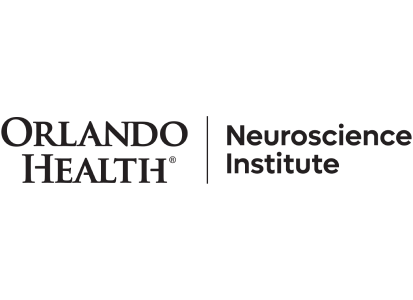Types of Stroke and Symptoms
Cerebrovascular disorders include a wide range of conditions that affect blood flow in your brain. These can cause a reduction in blood flow to the brain or bleeding in a specific area of the brain. This group of disorders includes brain aneurysms, brain bleed, carotid artery disease and transient ischemic attack (mini stroke.) Among the most common forms of cerebrovascular disease are stroke (ischemic and hemorrhagic) and carotid stenosis.
Ischemic strokes: These occur when something blocks the flow of blood to your brain. Common causes include clots that form in the brain or fragments of clots from elsewhere in the body. These account for 80 percent of all strokes.
Hemorrhagic strokes: These occur because of bleeding in or around your brain. A common cause is the tearing or bursting of a blood vessel inside your brain.
Symptoms can vary, based on what part of the brain is being affected by the blockage or bleeding. Symptoms include:
- Paralysis or weakness on one side of your body
- Difficulty speaking
- Slurred speech
- Losing muscle control on one side of your face
- Suddenly losing one or more of your five senses
- Blurred vision
- Sudden clumsiness
- Dizziness
- Nausea and vomiting
- Sudden personality change
- Confusion or agitation
- Seizures
- Memory loss
- Sudden and severe headache
Carotid stenosis: This slow-developing disease often has no symptoms during the early stages. Unfortunately, the condition often is found only after an ischemic stroke, in which pieces of accumulated plaque break loose and cut off blood flow to an area of the brain. In many instances this may be preceded by a transient ischemic attack (mini stroke), where the blockage lasts only a few minutes. Symptoms of carotid stenosis include:
- Paralysis or weakness on one side of your body
- Vision problems in one eye
- Losing muscle control on one side of your face
- Difficulty speaking
- Slurred speech
- Nausea and vomiting
- Sudden personality change
- Confusion or agitation
- Seizures
- Memory loss
It is important to note that some symptoms can point to the general location of the stenosis. A blockage on the left side, for example, may create vision, muscle and limb problems on the right side of your body and vice versa.
Diagnosis
Symptoms of cerebrovascular disorders can mimic many other conditions, making it critical that you work with the right team to accurately diagnose your condition and get you on the path to treatment.
You should quickly seek medical help if you or someone you know is exhibiting stroke symptoms. Stroke is the fifth-leading cause of death in the U.S. and the leading cause of disability worldwide. Getting help sooner will increase the chances of a more positive outcome.
Diagnosis starts with a neurological examination where you doctor will ask you to answer a series of questions and perform a few tasks. This will help determine if there is a problem with how your brain is working. From there, possible tests include:
- Magnetic resonance imaging (MRI): Powerful magnets and radio waves are used to create detailed images of your head and neck.
- Computed tomography (CT) scan: These scanners use multiple X-ray images compiled with the help of a computer to create highly detailed 3D images of your head and neck. A dye may be injected into your bloodstream to highlight blockages.
- Blood tests: These tests look for a range of contributing factors, including signs of infection, clotting ability, blood sugar, and kidney and liver function.
- Electrocardiogram (EKG): This test can be used to rule out heart problems.
- Electroencephalogram (EEG): The test can rule out seizures.
- Carotid ultrasound: Soundwaves are used to create detailed images of the carotid arteries in the neck. It can reveal the presence of fatty deposits, which can restrict blood flow.
- Cerebral angiography: A thin, flexible tube is inserted through the groin and guided through major arteries. A dye, injected into blood vessels, helps X-ray imaging provide a detailed view of the arteries in the neck and brain.
Treatment
The treatment approach will vary, based on your diagnosis and unique needs. For an ischemic stroke, for example, the priority is to restore blood flow. If this can be done soon enough, permanent damage may be avoided or reduced in severity. With hemorrhagic strokes, the emphasis generally is on reducing the bleeding and improving your blood’s clotting ability. With carotid stenosis, the goal is to remove the blockage before it causes additional problems.
Treatments often involve a combination of options, including medications and lifestyle changes to slow the accumulation of fatty deposits and to keep your blood pressure and cholesterol under control. If you have experienced a stroke, you will likely need rehabilitation to regain abilities or learn new ways to accomplish day-to-day tasks.
Among the nonsurgical treatment and rehabilitation options:
- Thrombolytic drugs: These drugs are designed to dissolve blood clots. They can be effective if administered within four and a half hours after stroke symptoms start.
- Mechanical thrombectomy: A tube-like catheter is inserted into a major blood vessel and guided to the site of a clot. The catheter has a tip on the end that removes the clot. The procedure can be effective within 24 hours of the start of symptoms.
- Blood pressure control: Hemorrhagic strokes are often caused by high blood pressure. So getting that pressure under control can be critical to limiting bleeding and making it easier for the damaged blood vessel to clot and seal.
- Clotting support: This is another treatment common for hemorrhagic strokes. Infusions of medications or blood factors that increase clotting ability can help control bleeding.
- Speech therapy: You may need help regaining language and speaking skills. This also includes the muscles you use to eat, drink and breathe.
- Physical therapy: Your therapist will help you strengthen or relearn the ability to use your hands, feet, arms and legs. This could include your ability to walk and maintain balance.
- Occupational therapy: These sessions will focus on the activities of daily life, including getting dressed, preparing a meal and using a computer.
- Cognitive therapy: Your therapist will work with you on memory issues and activities requiring focus and concentration.
In some instances, your team may recommend surgery.
Surgical options include:
Emergency endovascular procedures: These treatments are designed to deal with the stroke from inside the blocked blood vessel. Your surgeon will insert a thin tube (a catheter) into an artery in your groin and guide it through your body to the blockage. From there, there are two options:
- A special medication is delivered directly to the clot to dissolve it.
- A tool at the end of the catheter is used to physically remove the clot.
Carotid endarterectomy: Your surgeon removes plaque from the carotid arteries (they run along each side of your neck) that supply blood to your brain. The procedure requires your surgeon to make an incision in the front of your neck.
Eversion carotid endarterectomy: With this variation of the procedure, your surgeon removes a section of your carotid artery and turns it inside out before reattaching it.
Angioplasty and stents: A catheter is threaded from an artery in your groin to your carotid arteries. By inflating a special balloon, your surgeon expands the artery to improve blood flow. Tiny metal stents are used to reinforce the expansion.
Surgical clipping: Your surgeon puts a clamp at the base of the aneurysm to stop the flow of blood. It can keep the aneurysm from bursting.
Endovascular embolization: A catheter is threaded (guided by advanced imaging) through an artery in your groin to the spot of the aneurysm in your brain. Your surgeon places platinum coils into the troubled artery, creating a blockage and causing blood to clot.
Surgical AVM removal: An arteriovenous malformation (AVM) is an abnormal tangle of blood vessels that can cause hemorrhagic strokes. If this bundle of vessels is in an accessible area, your surgeon may recommend removal.
Stereotactic radiosurgery: This minimally invasive procedure uses tightly focused beams of radiation to repair blood vessel malformations.
Carotid endarterectomy: This is the most common treatment for carotid stenosis. Your surgeon will make an incision in the front of your neck to access the clogged carotid artery. The blood vessel is then opened, cleaned and repaired with stitches or a graft. The procedure is helpful for reducing stroke risk if the narrowing is 70 percent or more.
Carotid angioplasty and stenting: This procedure is performed from inside the blood vessel. Your surgeon will insert a long, thin tube (catheter) into an artery in your groin and guide it to the spot of the blockage in your neck. At the tip of the tube is a tiny balloon that is inflated to widen the artery and improve blood flow. A small wire mesh coil (stent) is used to reinforce the expanded opening.
Our team participates in clinical trials that can offer our patients early access to promising treatments, surgeries and rehabilitation therapies.
Stroke Centers and Resources
If you or a loved one have recently suff ered from a stroke, seek treatment at one of our premiere facilities.
A Comprehensive Stroke Center is designated to treat the most critical and complex strokes. The Comprehensive Stroke Center is located at Orlando Health Orlando Regional Medical Center (ORMC) in downtown Orlando – the region’s only Level One Trauma Center. Coordinated teams provide seamless care, from advanced imaging and therapies through neurointensive care and rehabilitation. The center is recognized by the American Heart Association and American Stroke Association (AHA/ASA) with distinct honors. Learn more about the Comprehensive Stroke Center.
Orlando Health Dr. P. Phillips Hospital, Orlando Health – Health Central Hospital, Orlando Health St. Cloud Hospital, Orlando Health South Seminole Hospital and Orlando Health South Lake Hospital are designated Primary Stroke Centers. These facilities meet advanced certification standards through state and national healthcare-accreditation organizations.
Our Primary Stroke Centers evaluate and stabilize patients. They can deliver emergency treatments such as clot-busting therapy. Doctors may transfer critical patients to our Comprehensive Stroke Center at Orlando Regional Medical Center (ORMC) in Downtown Orlando. Telemedicine technology keeps our Primary Stroke Centers connected to ORMC specialists.
Learn more about our Primary Stoke Centers.
Stroke can cause mild-to-severe loss of function. It may limit your movement, vision, speech or other abilities, such as swallowing. Through compassionate care plans, innovative technologies and professionally supervised therapies, our stroke specialty teams will help you get back to living life more fully.
Orlando Health provides stroke rehabilitation services in Downtown Orlando and in Ocoee.
- Brain Injury Rehabilitation Center (BIRC) — Part of the Orlando Health Advanced Rehabilitation Institute, this stroke program is recognized by the Commission on Accreditation of Rehabilitation Facilities (CARF) for quality, transparency and patient satisfaction. Learn more about the Institute.
- Orlando Health - Health Central Park Nursing and Rehabilitation Center — Located in Winter Garden, this center offers compassionate, comprehensive care. Therapies focus on the unique needs of stroke patients.
Strokes affect every part of your life, but you don’t have to go through it alone. Orlando Health stroke support groups offer professional guidance. Connect with other survivors and caregivers. Find encouragement, tips, referrals and more to adjust to life after stroke
Navigate Your Health


Find a Neuroscience Specialist
Find a Neuroscience Specialist
Meet our doctors who specialize in the full range of neuroscience care. Our team of experts has experience in a variety of specialty areas. Together, we provide comprehensive evaluation, diagnosis and treatment options.
Find a Doctor

Patient Portal
Patient Portal
If you are a patient at Orlando Health Heart & Vascular Institute, our free online patient portal provides an easy and secure way to manage your health information. Reach us from any location at a time that’s convenient for you.
Learn More

Virtual Visit
Virtual Visit
Need to talk with a doctor, but don’t want to leave your home? Try our virtual visit (telehealth) option to connect with a physician from your phone, tablet or computer.
Learn More
